|
For reasons that are too complicated to explain, I ended up in Coventry. Coventry is a strange place. For those of you who don't know Coventry was decimated by a German firebombing air-raid on 14th November 1940. A large part of the city was destroyed, and as a result it was rebuilt in the 1950s and 60s.
Which is a shame because there are glimpses that it was once. There are some very attractive old buildings scattered around the place such as Ford's Hospital (above left) and the Council House (above right).
iron placards marking destroyed buildings (above left) Then you are greeted by this bank of new square blocky building (above right). It is when you see this that you realise to what extent your brain is geared to expecting a cathedral to be a certain thing. This to a certain extent defies this so my initial reaction at any rate was, well I don't think much of that. But then you adjust and actually it works really well, particularly once you get inside. It is large and vaulted light building with this honeycombed structure to the ceiling and at the end this impressive green backed tapestry of Jesus (above left) deigned and made by Graham Sutherland. It looms over the Nave, and echos and sets the town for the entire internal decoration. Those cement slabs you see on the walls have simple biblical inscriptions on them, and I found very effective. Sitting opposite the tapestry is an enormous plain glass window (plain as opposed to stained, it is in-fact inscribed with figures). It provides sunlight into the cathedral but also a view out onto the ruins of the old cathedral, which stands opposite. This is a very smart design feature. Perhaps what Coventry cathedral is most famous for is it's stained glass. I like stained glass and particularly modernist stained glass and there are few places you can see it (Leicester Cathedral is another). There are a number of artists involved the most spectacular of which is the Baptistery Window (above left) it is the work of two artists, Patrick Reyntiens and John Piper (designed by the latter, made by the former. It is a joyous medley of colour, this core of yellow, merging into green, blues and reds. Each panel has its own iconography forming part of the impressive whole. As you journey towards the alter there are columns of stained glass (like the above right) each with a different colour as their central theme and are the work of three different artists, Lawrence Lee, Keith New and Geoffrey Clarke. They face away from the congregation. They encourage contemplation and it is very easy to get lost in them. Only a very little of the original stained glass has been preserved and sits up towards the alter. It would have been easy to flinch from this modernist brief, go for something more traditional and therefore make for a terrible mish-mash but credit to the architects of the Cathedral, that they stick to to this brief, including this interesting city sculpture siting 3/4 (above left) of the way up the nave, and the Lady Chapel, (above right) which this evocative crown of thorns sculpture allowing you to peer into the gold and black mural. It's lovely. The other part of the church, is the chapel of unity (above left), with a decorated floor and this lovely futuristic shape (exterior shot above right). It has a different feel and feels separate cathedral so I wonder if it was added later. Again there is modernist stained glass, in thin shards at the points of the star (which I assume is what the shape is meant to be). Details have also been thought about to the thorn like tops to the choir stands and the spiky arrangements of the organ pipes (top left) to the sculpture of Arch Angel Michael defeating Lucifer. On the same square as the Cathedral sits the city Art Gallery, a drab building with a poor internal lay out. It is worth fighting your way through though as there are some gems of modern British art to be found. Paul Nash is a favourite of mine so it was with no small amount of joy that I discovered one of his that I hadn't seen of his (above left). All swirly with a soft feel to the whole things. I like particularly the huts. The looming down church is a Lowry (above right). I like the sky, echoed in the colours of the grave stones. This is the only Lowry I have seen with no people in it. It gives the painting a lonely abandoned feel to it which is perhaps the point. David Bomberg is a favourite of mine and again it was a nice surprise to find one of his that I hadn't seen before (above left). A landscape of Cornwall and relative figurative in Bomberg times. The way the sky and the land play of each other is very nice and I particularly like that blue eye in the top right corner. Recently I was in Cardiff. A discovery I made there and rapidly rising up my chart of favourite painters is Kriffin Williams. He paints these Welsh landscapes of which the one above right is fairly typical. Thick glossy paint giving a solid, somehow industrial feel to these rural landscapes. There is also a Cartoon of the Sutherland tapestry (above left). It is nice to get so close to it and see the intricacies of the design, it is also nice to see what changed and what stayed the same in the final piece.
Before you leave though, go around the ruins of the old cathedral and which has been tastefully decorated by modern sculpture. It is all rather impressive.
0 Comments
Leave a Reply. |
Archives
June 2024
Categories |


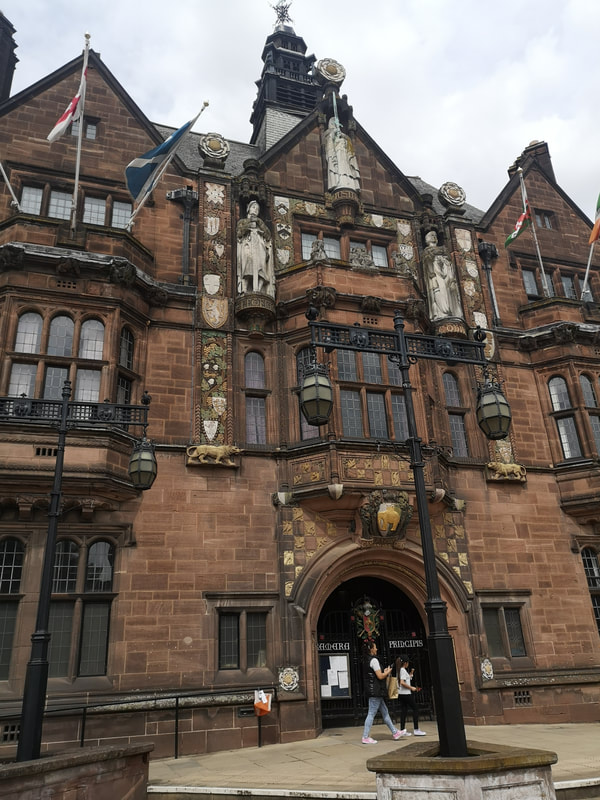

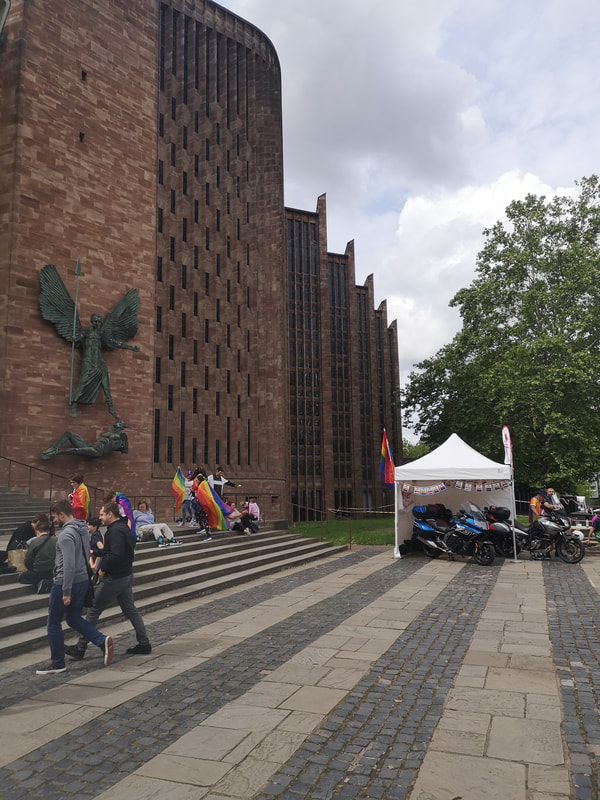

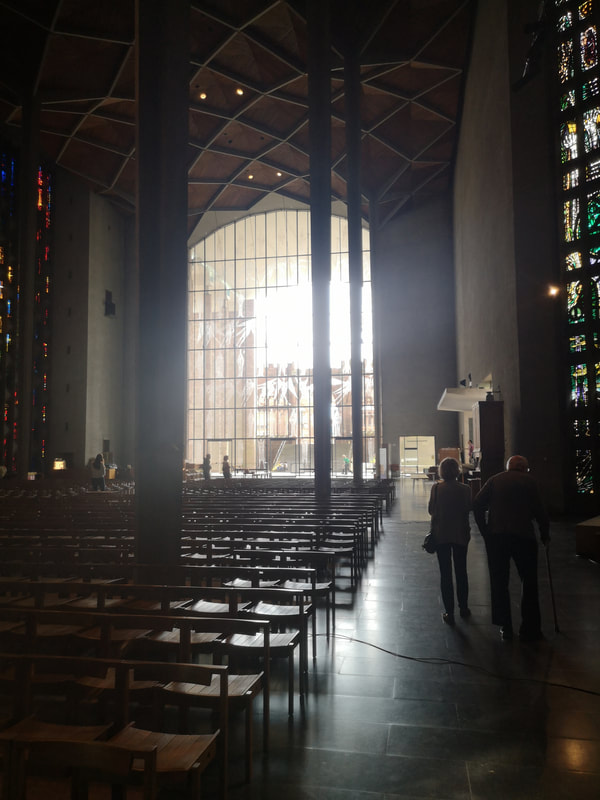



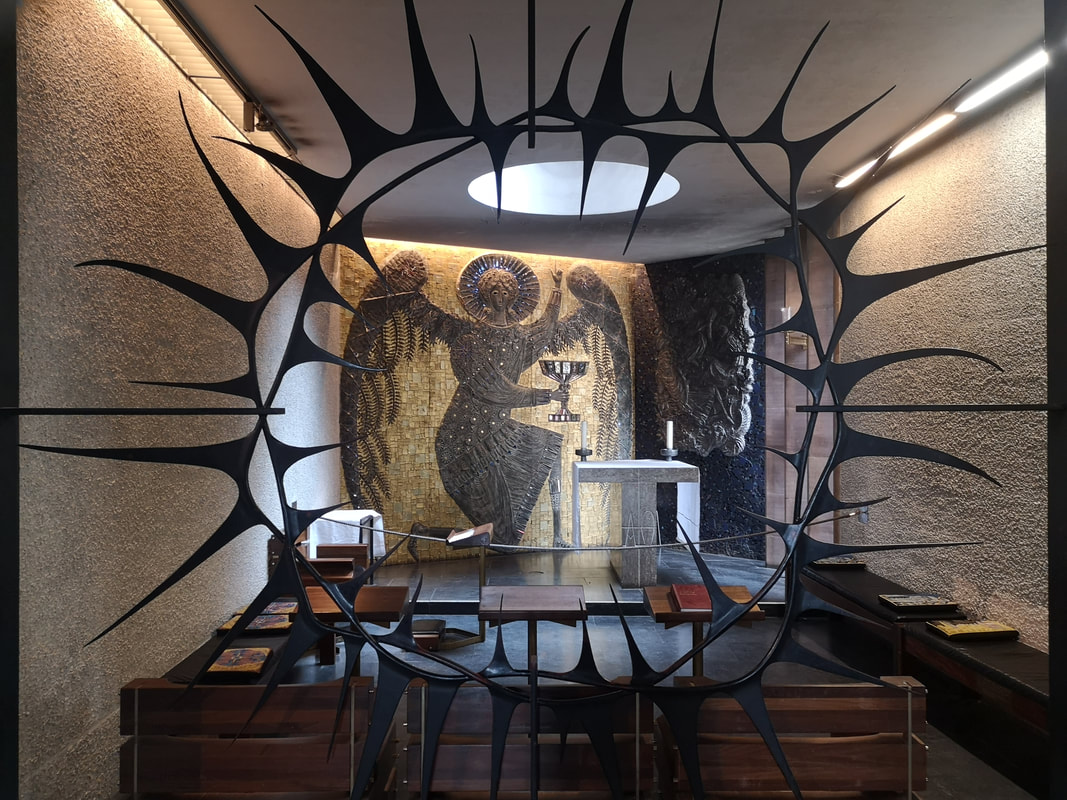

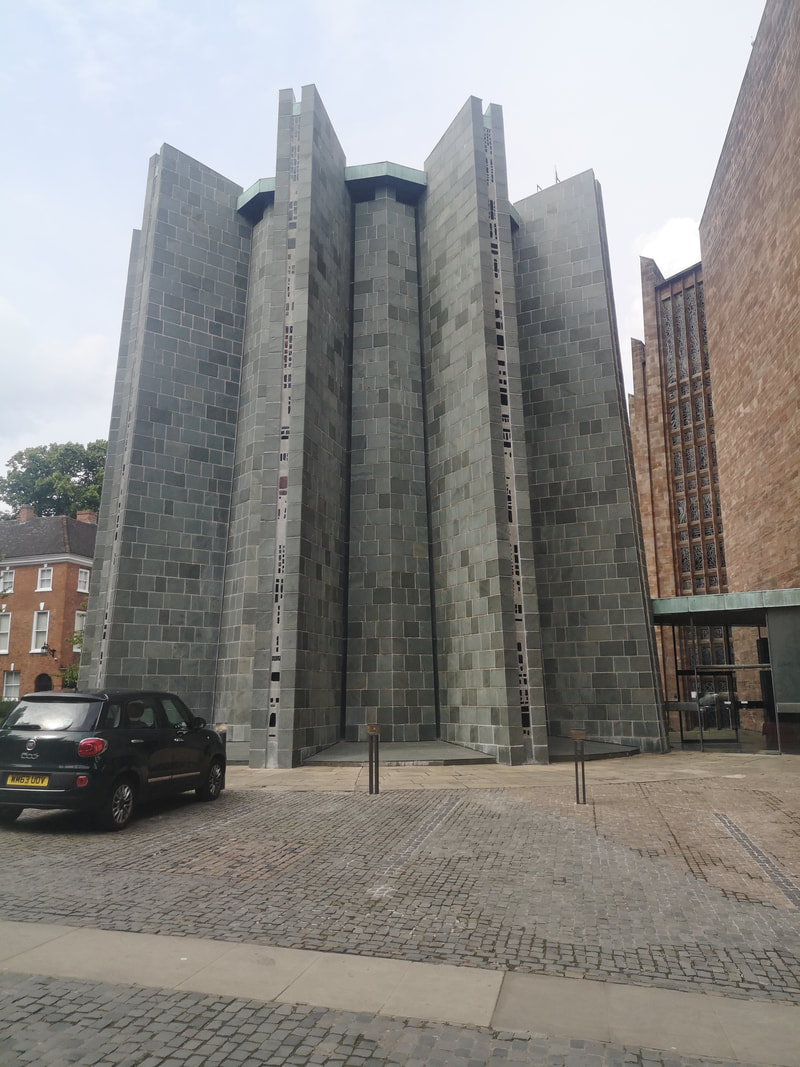


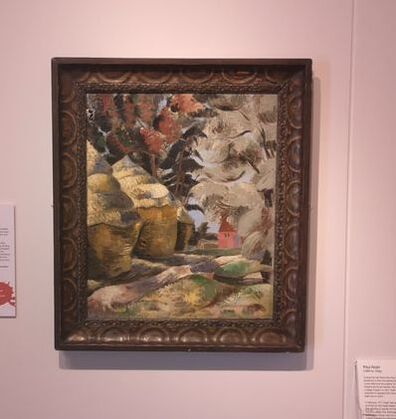
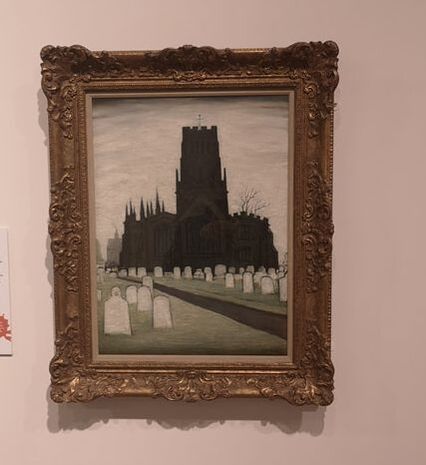



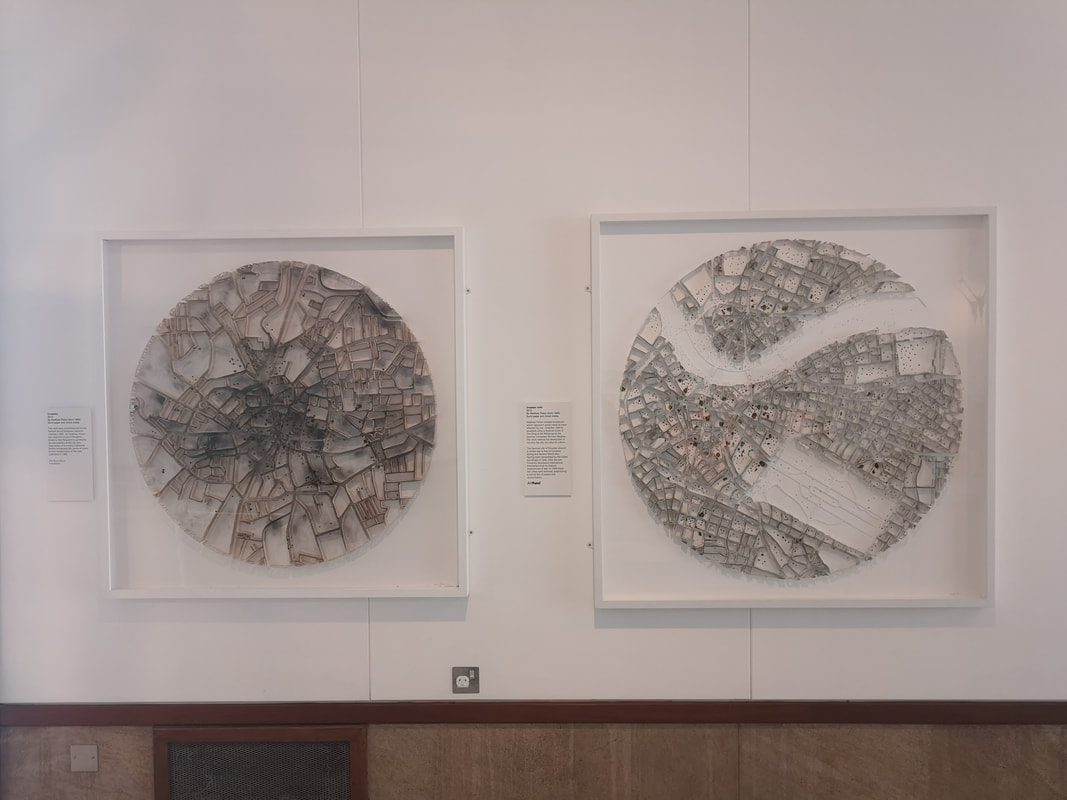
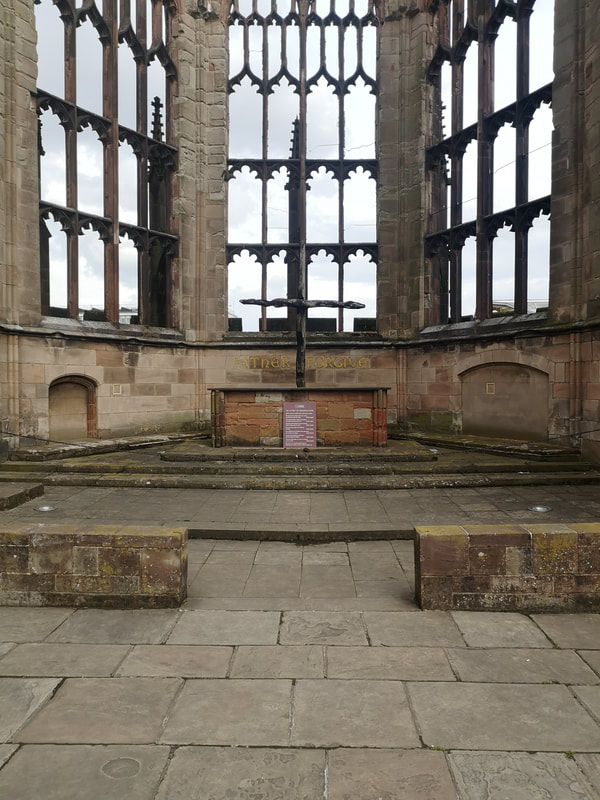

 RSS Feed
RSS Feed